
Find maximum positive shear and bending moment at point B due to the series of four moving concentrated loads
Explanation of Solution
Calculation:
Apply a 1 k unit moving load at a distance of x from left end A.
Sketch the free body diagram of beam as shown in Figure 1.
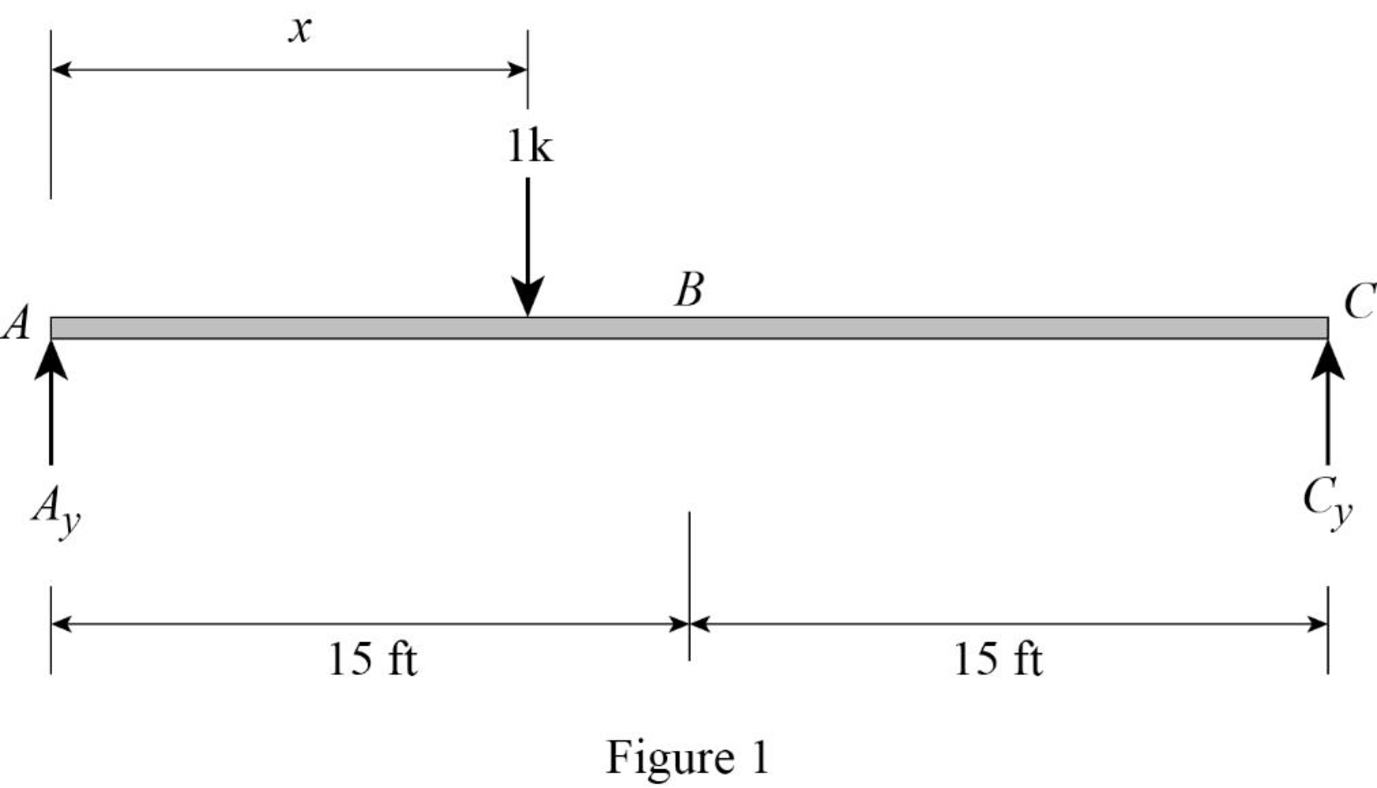
Refer Figure 1.
Find the equation of support reaction
Take moment about point C.
Consider moment equilibrium at point C.
Consider clockwise moment as positive and anticlockwise moment as negative.
Sum of moment at point C is zero.
Find the equation of support reaction
Apply vertical equilibrium equation of forces.
Consider upward force as positive
Substitute
Influence line for shear at B.
Find the equation of shear force at B of portion AB
Sketch the free body diagram of the section AB as shown in Figure 2.
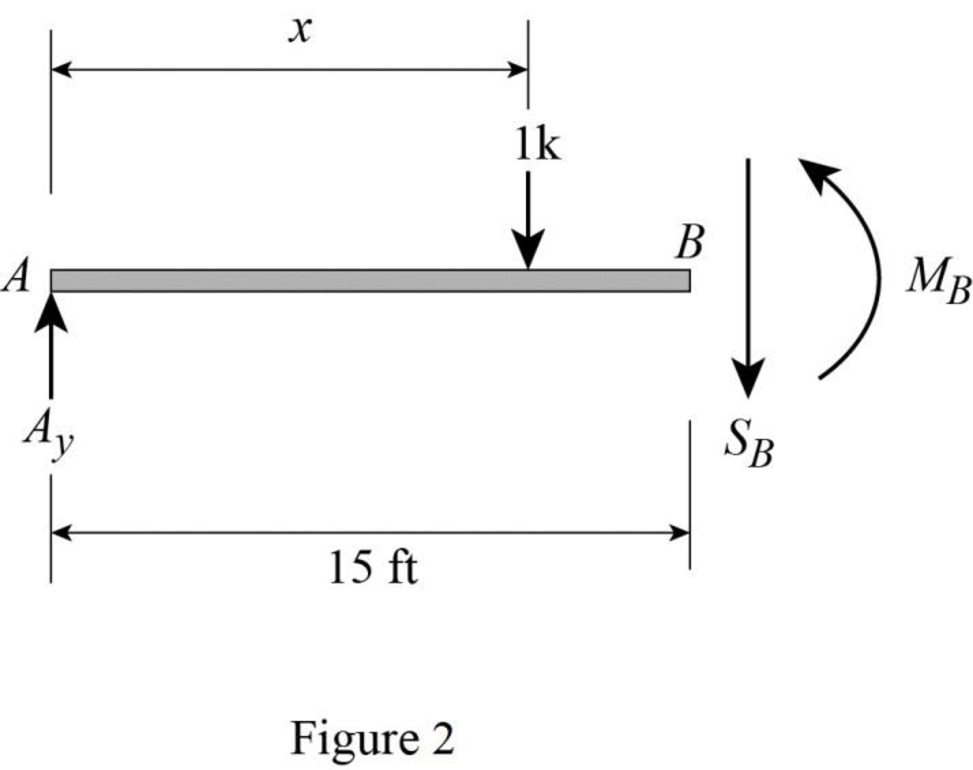
Refer Figure 2.
Apply equilibrium equation of forces.
Consider upward force as positive
Substitute
Find the equation of shear force at B of portion BC
Sketch the free body diagram of the section BC as shown in Figure 3.

Refer Figure 3.
Apply equilibrium equation of forces.
Consider upward force as positive
Substitute
Thus, the equations of the influence line for
Find the value of influence line ordinate of shear force at various points of x using the Equations (3) and (4) and summarize the value as in Table 1.
| x | |
| 0 | 1 |
| 30 | 0 |
Draw the influence lines for the shear force at point B using Table 1 as shown in Figure 4.
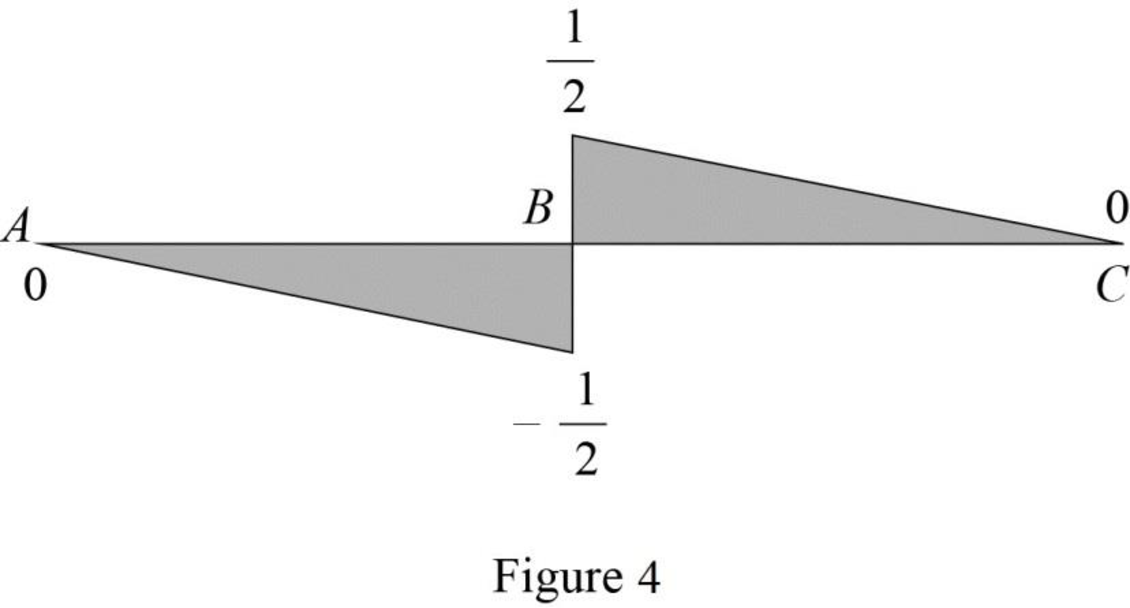
Refer Figure 4.
Find the slope
Here,
Substitute 15 ft for
Find the slope
Here,
Substitute 15 ft for
Sketch the loading position as shown in Figure 5.
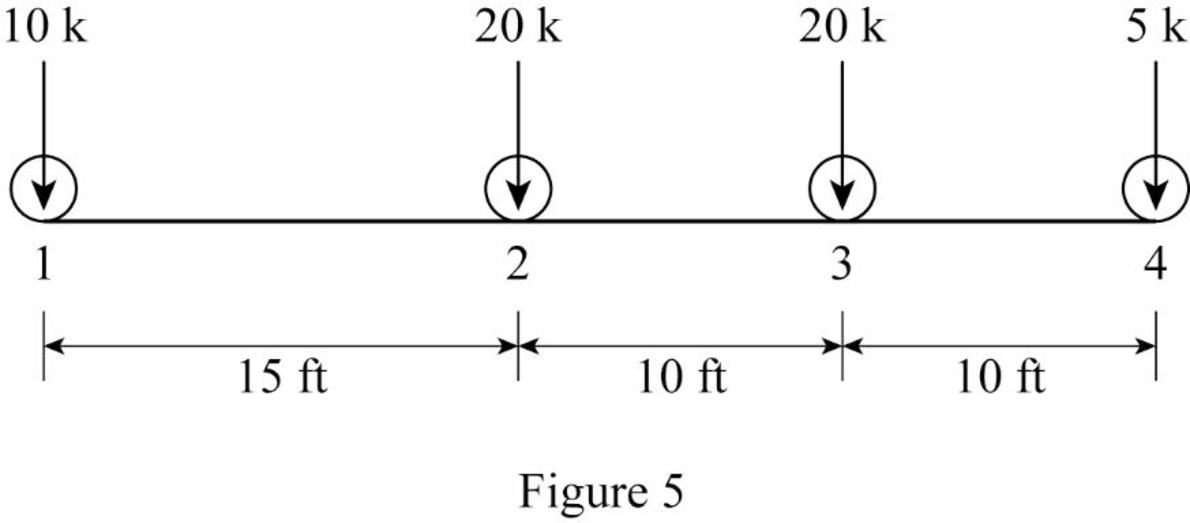
Find the maximum positive shear force at B.
Sketch the loading position on the beam when the load 1 placed at just right of B as shown in Figure 6.

Refer Figure 6.
Find the shear force at B when the load 1 placed at just right of B.
Substitute 15 ft for
Sketch the loading position on the beam when the load 2 placed at just right of B as shown in Figure 7.
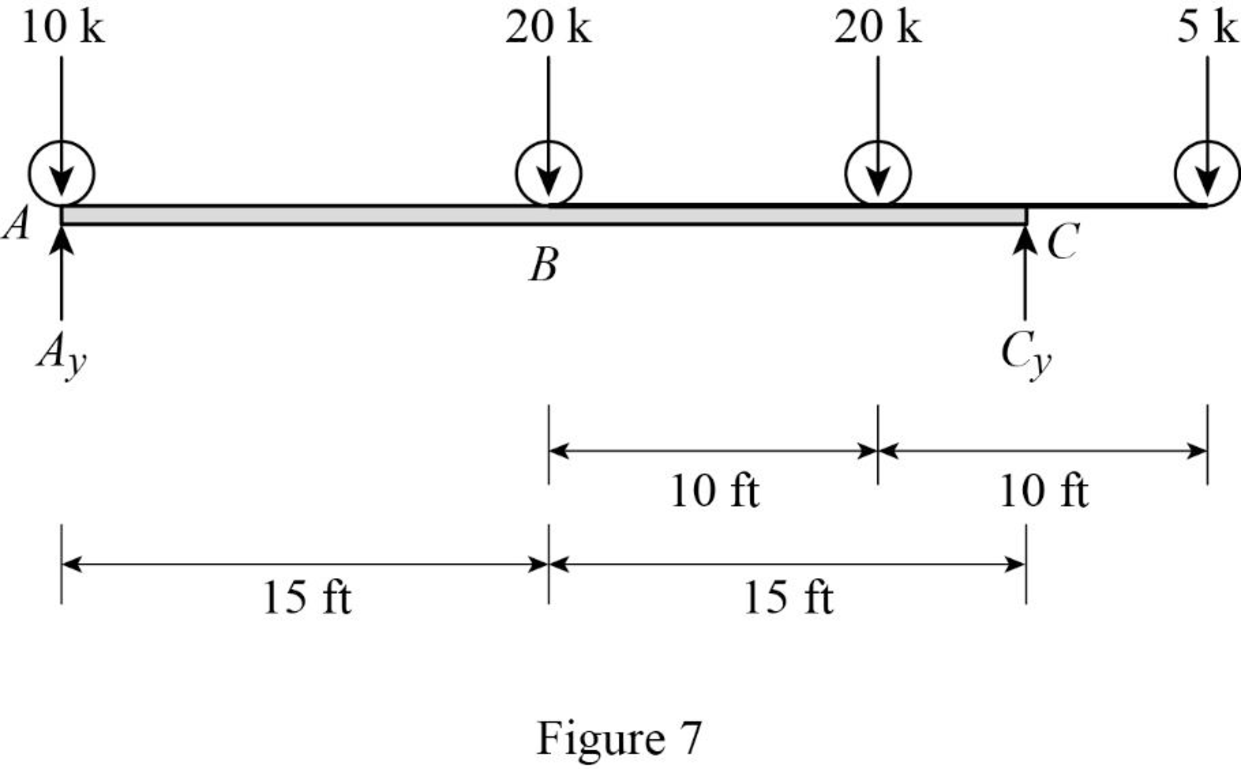
Refer Figure 7.
Find the shear force at B when the load 2 placed at just right of B.
Substitute 15 ft for
Sketch the loading position on the beam when the load 3 placed at just right of B as shown in Figure 8.

Refer Figure 8.
Find the shear force at B when the load 3 placed at just right of B.
Substitute 15 ft for
Sketch the loading position on the beam when the load 4 placed at just right of B as shown in Figure 9.

Refer Figure 9.
Find the shear force at B when the load 3 placed at just right of B.
Substitute 15 ft for
Maximum positive shear force at B as follows.
The maximum positive shear at B is the maximum of
Therefore, the maximum positive shear at point B is
Influence line for moment at B.
Refer Figure 2.
Consider clockwise moment as positive and anticlockwise moment as negative.
Find the equation of moment at B of portion AB
Substitute
Refer Figure 3.
Consider clockwise moment as negative and anticlockwise moment as positive.
Find the equation of moment at B of portion BC
Substitute
Thus, the equations of the influence line for
Find the value of influence line ordinate of moment at various points of x using the Equations (5) and (6) and summarize the value as in Table 2.
| x | |
| 0 | 0 |
| 30 | 0 |
Draw the influence lines for the moment at point B using Table 2 as shown in Figure 10.
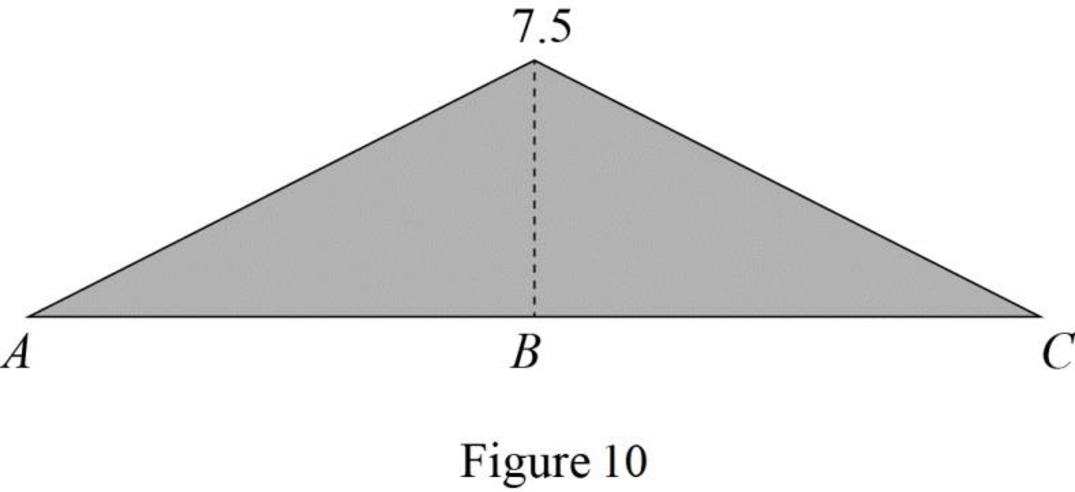
Refer Figure 9.
The slope of portion AB and BC is same.
Find the slope
Here,
Substitute 15 ft for
Find the maximum positive bending moment at B.
Refer Figure 6.
Find the bending moment at B when the load 1 placed at just right of B.
Substitute 15 ft for
Refer Figure 7.
Find the bending moment at B when the load 2 placed at just right of B.
Substitute 15 ft for
Refer Figure 8.
Find the bending moment at B when the load 3 placed at just right of B.
Substitute 15 ft for
Refer Figure 9.
Find the bending moment at B when the load 1 placed at just right of B.
Substitute 15 ft for
Maximum positive bending moment at B as follows.
The maximum positive bending moment at B is the maximum of
Therefore, the maximum positive bending moment at point B is
Want to see more full solutions like this?
